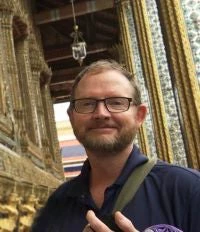 A woman weaving in Maguindanao province,
A woman weaving in Maguindanao province,
Laying the foundation for Universal Health Coverage (UHC) is a difficult task for any country, and it is infinitely more challenging in poor, remote and conflict-torn areas such as the Philippine Bangsamoro Autonomous Region in Muslim Mindanao (BARMM). A long conflict, rooted in a struggle for recognition of identity and autonomy, that persisted with varying degrees of intensity has led to the decline in development in the region, located in Mindanao, the southernmost major island of the Philippines.
A Health Financing System Assessment (HFSA) conducted by the World Bank in 2018, has identified gaps in the health system of the new autonomous region and makes recommendations toward improving the service delivery system and paving the way toward UHC.
The ratification of the Bangsamoro Organic Law in 2019 brought peace and gave the region its own government and Ministry of Health to better manage and direct health programs.
The BARMM HFSA identifies the unique constraints and opportunities facing the health system of a region whose transition to regional autonomy will be complete in 2022. During its transition, while building a new governance system and institutions, is an opportune time to prioritize high-impact policies and investments for delivering better health care and setting the foundation for universal coverage mandated by a national UHC Law in the Philippines passed in 2019.
Poor health outcomes due to armed conflict
Building an effective health care system promises to be an exacting task for BARMM, where the HFSA’s 2019 household survey found 50 percent of its 4.64 million population living on less than PhP 10,727 a month, below the national poverty line. Poverty incidence in BARMM is nearly three times the national figure. Health outcomes in BARMM are poor — under-five child mortality is twice as high, nearly 40 percent of children under age five are stunted compared to one-third throughout the Philippines, and less than half of pregnant women attended the recommended four antenatal visits compared to 86.5 percent nationally.
The HFSA, also supported by the Australian Government, has helped highlight areas needing improvements and recommended solutions for accomplishing them. Let’s look at a few of the areas crucial to UHC.
Equity in access
Equal access to health services will be an extraordinary challenge for BARMM where service delivery is undermined by poverty and a fragile political and security context. In addition to the inequities mentioned earlier, deficiencies in immunization are large, suggesting that the broader health system is functioning poorly. Though over 70 percent of respondents reported accessing immunization services, the assessment found just 34 percent of children aged 12–23 months received basic vaccine coverage. Only 10 percent were fully vaccinated and nearly a quarter had no vaccine history at all.
Quality of health service
The delivery of good quality health services also falls short in the region. Two-thirds of health expenditures went toward curative care at hospitals and only 35 percent to preventive care at primary facilities. Furthermore, a World Bank assessment in 2017 found an overall shortage and uneven distribution of rural health units — the grassroots service outlets — throughout the region. Some communities had severely limited access to primary care services or none at all. There is a lack of human resources; doctors, nurses, and midwives; as well as basic amenities like electricity, communications equipment, and internet-enabled computers, to support health service provision. Substantial gaps in essential medicines also exist.
Health financing
Health financing in the BARMM, 65 percent of which comes from national government allocations, is problematic. The flow of funds is complex and convoluted, with many funding streams running parallel to each other, uncoordinated. This makes it difficult for rural health units to efficiently program their resources, and may not have enough to cover their operating expenses without interruptions despite receiving funds from multiple sources. Planners should understand the various funding streams, including their magnitudes and uses, to mobilize funding to where it will yield the best value for the money.
Gender
The HFSA explicitly considered the impact of gender on accessibility and readiness of gender-specific services, such as maternal and child health, which were found to be better than services for communicable and non-communicable diseases. Nutrition indices were also better for female than male children, while immunization coverage rates were similar for both. However, mothers makeup over 90 percent of primary caregivers and should be engaged early in a “women first approach” to improving child health outcomes through interventions in nutrition and breastfeeding practices.
What can be done
The HFSA made specific recommendations for improving multiple areas of the BARMM health system. The following overall recommendations will go a long way to delivering good health services and universal coverage to the people of this long-suffering region.
Since 2020, government appropriations to BARMM have come in a block grant, giving the regional government more control over budget spending. To eliminate fragmented and uncoordinated funding streams in the health system, the BARMM Ministry of Health should initiate a comprehensive strategic plan with short- and medium-term goals to fill gaps in service provision and enhance infrastructures that support service delivery.
And considering the poor health access and outcomes, the Bangsamoro Transition Authority is strongly advised to create a governance structure for health that reduces fragmentation and simplifies management of programs, engages local-level players in supporting specific high impact functions, and strategically utilizes existing and additional funds for maximum impact and minimal duplication.
Although focused on BARMM, the HFSA can serve as a case study for challenges that other regions in the Philippines may face as the nation moves towards unified financing for UHC and integrated health service delivery. COVID-19 is complicating the situation but emergency funds have been mobilized to address it. Hopefully, such relief efforts can overcome the pandemic’s disruptive impacts and meet the high expectations people in the region, and indeed all of the Philippines, have for BARMM.



Join the Conversation